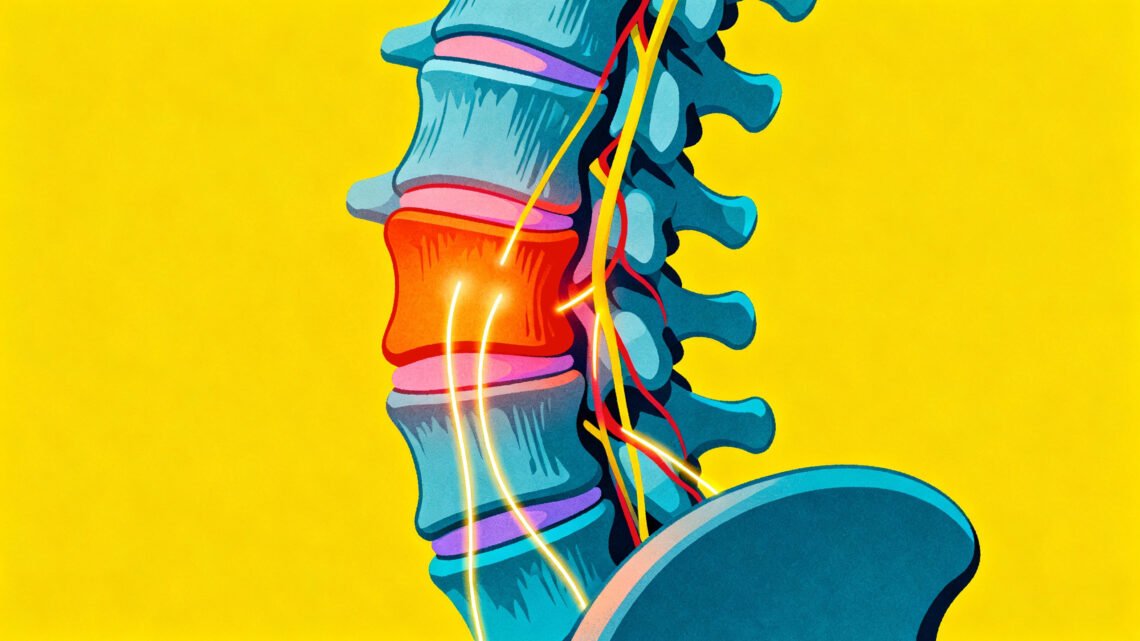Lumbar facet syndrome is a common cause of lower back pain that affects many individuals worldwide. Understanding the key symptoms and effective treatment options for lumbar facet syndrome is crucial for those suffering from chronic back discomfort. This article will guide you through the primary signs to watch for and the best approaches to manage and alleviate this often challenging condition.
What Is Lumbar Facet Syndrome?
Lumbar facet syndrome refers to pain originating from the facet joints in the lumbar (lower) spine. These small joints, located between the vertebrae, play a critical role in stabilizing the spine and allowing for smooth movement. When these joints become inflamed, irritated, or degenerated due to injury or arthritis, it can result in lumbar facet syndrome, leading to significant discomfort and restricted mobility.
Key Symptoms of Lumbar Facet Syndrome
Recognizing the symptoms of lumbar facet syndrome can help in seeking timely treatment. The common symptoms include:
- Localized Lower Back Pain: The pain is often dull and aching, centralized near the affected facet joints, typically on one side.
- Pain Radiating to the Buttocks or Thighs: Unlike sciatica, this radiating pain is generally limited and does not extend below the knee.
- Increased Pain with Extension and Rotation: Movements such as leaning backward or twisting the spine aggravate the pain.
- Tenderness and Stiffness: Patients often experience stiffness in the lower back, especially after periods of inactivity or upon waking.
- Pain Relief When Bending Forward: Bending forward or sitting often eases the symptoms as the facet joints open up in this position.
These symptoms can sometimes be mistaken for other causes of back pain, such as herniated discs or muscle strain. Therefore, a proper clinical evaluation and imaging may be necessary for accurate diagnosis.
Causes and Risk Factors of Lumbar Facet Syndrome
Understanding the causes helps in both prevention and treatment. Lumbar facet syndrome can result from:
- Degenerative Changes: Osteoarthritis in the facet joints due to aging causes cartilage breakdown and joint inflammation.
- Trauma or Injury: Sudden impact or repetitive stress from heavy lifting or poor posture can damage the facet joints.
- Spinal Instability: Conditions such as spondylolisthesis can increase pressure on the facet joints.
- Poor Posture and Body Mechanics: Prolonged sitting, especially with improper posture, can contribute to joint strain.
- Obesity: Excess body weight places additional stress on the lumbar spine.
How Is Lumbar Facet Syndrome Diagnosed?
A thorough diagnosis involves a combination of patient history, physical examination, and imaging studies:
- Physical Exam: Assessment of pain patterns and range of motion helps narrow down the source.
- Diagnostic Imaging: X-rays, MRI, or CT scans can reveal facet joint arthropathy or other spinal abnormalities.
- Diagnostic Facet Joint Injections: Injection of an anesthetic into the affected facet joint can confirm the diagnosis if it temporarily relieves pain.
According to the American Academy of Orthopaedic Surgeons, diagnostic injections are often a gold standard for confirming lumbar facet syndrome (source).
Effective Treatment Options for Lumbar Facet Syndrome
Treatment focuses on relieving pain, improving function, and addressing the underlying cause. The main treatment options include:
1. Conservative Treatments
- Physical Therapy: Customized exercises strengthen supporting muscles, improve flexibility, and promote better posture.
- Medications: Nonsteroidal anti-inflammatory drugs (NSAIDs) help reduce inflammation and pain.
- Activity Modification: Avoiding activities that exacerbate pain and practicing proper body mechanics.
- Heat and Cold Therapy: Applying heat or ice packs can alleviate muscle tension and reduce inflammation.
2. Minimally Invasive Procedures
- Facet Joint Injections: Corticosteroid injections into the joint provide temporary pain relief and reduce inflammation.
- Medial Branch Blocks: Injections that target the nerves supplying the facet joints help diagnose and sometimes relieve pain.
- Radiofrequency Ablation (RFA): This technique uses heat to disrupt nerve signals from the facet joints, offering longer-lasting pain relief.
3. Surgical Options
Surgery is usually considered when conservative and minimally invasive treatments fail. Procedures may include:
- Facet Rhizotomy: Surgical interruption of nerve supply to the facet joints.
- Spinal Fusion: Joining two or more vertebrae to stabilize the spine, often reserved for severe cases.
Lifestyle Changes to Support Recovery
In addition to medical treatments, certain lifestyle changes can help manage lumbar facet syndrome:
- Maintain a healthy weight to reduce lumbar spine stress.
- Practice ergonomic techniques during daily activities and work.
- Engage in low-impact exercises such as swimming or walking.
- Avoid prolonged sitting or standing without breaks.
Summary: Managing Lumbar Facet Syndrome
Lumbar facet syndrome is a significant source of lower back pain but is manageable with a comprehensive approach combining diagnosis, treatment, and lifestyle modifications. Recognizing key symptoms such as localized back pain, stiffness, and pain with spinal extension can lead to early intervention and better outcomes.

Top 5 Tips for Managing Lumbar Facet Syndrome
- Consult a healthcare provider early for an accurate diagnosis.
- Engage in physical therapy tailored to strengthen back muscles.
- Use medications or injections as recommended to control pain and inflammation.
- Modify daily activities to avoid aggravating the facet joints.
- Consider advanced treatments like radiofrequency ablation if pain persists.
FAQ About Lumbar Facet Syndrome
Q1: Can lumbar facet syndrome cause leg pain?
A1: Yes, lumbar facet syndrome can cause pain that radiates to the buttocks and upper thighs but typically does not extend below the knee like sciatica.
Q2: How long does treatment for lumbar facet syndrome take?
A2: Treatment duration varies; conservative therapies may take weeks to months, while minimally invasive procedures can provide quicker relief but sometimes require repeat treatments.
Q3: Is lumbar facet syndrome the same as a herniated disc?
A3: No, lumbar facet syndrome involves the facet joints, whereas a herniated disc relates to the spinal discs; both conditions can cause back pain but have different treatments.
Conclusion: Take Control of Your Back Health Today
If you or a loved one are experiencing symptoms of lumbar facet syndrome, do not delay in seeking professional evaluation and treatment. With proper care, including physical therapy, pain management, and possible procedural interventions, you can significantly reduce pain and improve your quality of life. Take the first step towards a healthier back by consulting a spine specialist and creating a personalized treatment plan tailored to your needs. Your spine health is worth it!





